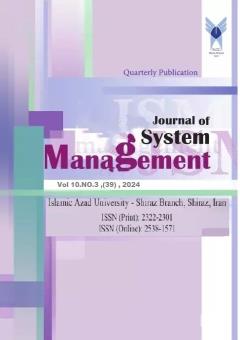Assessment of Noise Exposure of Workers in Industrial Environments Using the Bowtie and DEA Approach
محورهای موضوعی : Decision Analysis
Nazila Adabavazeh
1
![]() ,
Mehrdad Nikbakht
2
,
Mehrdad Nikbakht
2
![]()
1 - Modern Manufacturing Technologies Research Center, Department of Industrial Engineering, Najafabad Branch, Islamic Azad University, Najafabad, Iran.
2 - Modern Manufacturing Technologies Research Center, Department of Industrial Engineering, Najafabad Branch, Islamic Azad University, Najafabad, Iran.
کلید واژه: Noise exposure, Industrial environment, Bowtie approach, DEA,
چکیده مقاله :
Sound waves are one of the essential factors of daily life and work activities that can cause environmental pollution in the necessary contact between humans and the surrounding world. Noise pollution is reported to be amongst the leading causes of occupational diseases and the second leading cause of occupational injuries in the workplace. A variety of equipment, machines, and work processes are used in industry that are considered sources of disturbing noise. The aim of this study is to assess the noise exposure of workers in industrial environments using the Bowtie approach and Data Envelope Analysis (DEA). The motivation of the research is the multidimensional nature of the concept of noise exposure from the perspective of the exposure situation and the capability of DEA models to evaluate the efficiency of stations based on multiple inputs and outputs. This study uses a quantitative approach. The research method is descriptive cross-sectional. In this research, a case study was conducted to evaluate 10 stations of a company in the industrial area in the first half of 2023. The Bowtie approach was used to determine the correlation between noise exposure and its consequences. The collection of noise exposure measurement data enables the mathematical modeling of the BCC input based on the DEA approach using the EMS software, where the input of the model is the "equivalent sound level" and the output of the model is the "noise pollution situation". The results show the different efficiencies of the 10 stations investigated and the superiority of station 7 compared to the other stations. In the industrial area studied, 30% of the total measuring stations were located in the risk range. The average sound pressure level was estimated at 101.70 dB. It seems that companies can effectively improve the health of their employees in the workplace by directing their activities within the permissible range of noise exposure. The efficiency of measuring stations plays a constructive role in reducing exposure and improving the health of employees in the workplace.
Sound waves are one of the essential factors of daily life and work activities that can cause environmental pollution in the necessary contact between humans and the surrounding world. Noise pollution is reported to be amongst the leading causes of occupational diseases and the second leading cause of occupational injuries in the workplace. A variety of equipment, machines, and work processes are used in industry that are considered sources of disturbing noise. The aim of this study is to assess the noise exposure of workers in industrial environments using the Bowtie approach and Data Envelope Analysis (DEA). The motivation of the research is the multidimensional nature of the concept of noise exposure from the perspective of the exposure situation and the capability of DEA models to evaluate the efficiency of stations based on multiple inputs and outputs. This study uses a quantitative approach. The research method is descriptive cross-sectional. In this research, a case study was conducted to evaluate 10 stations of a company in the industrial area in the first half of 2023. The Bowtie approach was used to determine the correlation between noise exposure and its consequences. The collection of noise exposure measurement data enables the mathematical modeling of the BCC input based on the DEA approach using the EMS software, where the input of the model is the "equivalent sound level" and the output of the model is the "noise pollution situation". The results show the different efficiencies of the 10 stations investigated and the superiority of station 7 compared to the other stations. In the industrial area studied, 30% of the total measuring stations were located in the risk range. The average sound pressure level was estimated at 101.70 dB. It seems that companies can effectively improve the health of their employees in the workplace by directing their activities within the permissible range of noise exposure. The efficiency of measuring stations plays a constructive role in reducing exposure and improving the health of employees in the workplace.


